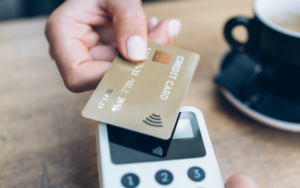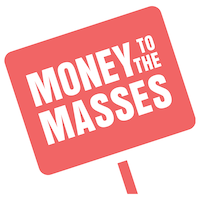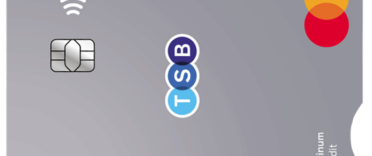 Comparing credit card deals can involve processing a lot of numbers. There are percentages that will be very important to how much money your card will cost you and figures that are critical to finding the best deal. One of the key numbers to look out for is the purchase rate on a credit card – the percentage that shows how much your spending will cost you. In this article, we explain why the purchase rate is important, what its limitations are and what other numbers you will need to keep an eye on.
Comparing credit card deals can involve processing a lot of numbers. There are percentages that will be very important to how much money your card will cost you and figures that are critical to finding the best deal. One of the key numbers to look out for is the purchase rate on a credit card – the percentage that shows how much your spending will cost you. In this article, we explain why the purchase rate is important, what its limitations are and what other numbers you will need to keep an eye on.
What is a credit card purchase rate?
The purchase rate is the level of interest you are charged on your outstanding credit card balance. You may see it referred to simply as the interest rate because it is the basic percentage charge you will pay on the money you are borrowing from the credit card company.
A key part of the credit card purchase rate is that it does not kick in right away. Most credit card providers will only apply the purchase rate after a period of around 56 days. This means that if you pay off your credit card balance at the end of the month, there will be no interest to pay.
How a credit card purchase rate works
The credit card purchase rate on your card will be a percentage figure, for example 30%. This interest rate will compound daily, so what you owe will increase each day and every subsequent calculation will be based on a higher amount as the total debt grows. The interest is added to your balance after a fixed period, usually 56 days. You can see how much interest you have been charged on your monthly statement.
The best way to use a credit card is always to pay off the balance in full at the end of the month. This will make the purchase rate irrelevant as your balance will never reach the 56-day point when interest is added on.
Some credit cards – known as 0% purchase credit cards – will have a 0% purchase rate period of more than 56 days as part of an introductory offer. This means that you will not be charged interest until that offer period expires, sometimes after as many as 30 months, though the offer can be withdrawn if you miss a minimum payment.
0% purchase cards
You can use a card with a 0% purchase rate to spread the cost of an expensive item over the interest-free period. This could mean spending £1,200 on a credit card with a 12 month 0% interest term and paying £100 a month to clear the balance before the offer expires. You can find the best deals in our article ‘Compare the Best 0% purchase credit cards’.
If you are unable to clear the balance before the term ends you may find that the purchase rate increases sharply and you have to pay interest on the remaining debt.
How a credit card purchase rate differs from the APR
The APR (annual percentage rate) on a credit card is the total cost of using that card in a year, expressed as a percentage. The key difference between the APR on a credit card and the purchase rate is the impact of fees, which can add significantly to the total annual cost of a card. For example, a card with a purchase rate of 30% and no standard fee will have an APR of 30%. A card with a purchase rate of 30% and an annual fee of £250 will have an APR of 111.3%. This is a huge difference, but the interest rate on the money you spend stays the same, the only difference is that the fee to keep the card is much higher
APR is useful because you can use it to compare credit cards by the total cost over the course of a year, rather than simply by the purchase rate. This is important because a card with a low purchase rate but a high annual fee could turn out to be more expensive than a card with a higher purchase rate but no annual fee. By using the APR to compare products you are getting a true idea of the real cost.
How a credit card purchase rate differs from representative APR
Representative APR works in a similar way to APR, but it is a more generalised figure, rather than the exact amount that card will cost you. The reason it is less specific is so that you can compare rates without having to be quoted a personal APR, which can require an application process and credit check.
The downside of representative APR is that the number you see on a credit card provider’s website or on a comparison page could be some way from what you are actually offered. The best rates on credit cards are reserved for applicants with high credit scores and strong borrowing histories. The representative APR figure is the minimum a lender expects at least 51% of applicants to be offered. Within that 51%, some people will be offered a lower rate than the representative APR. Among the remaining 49% of applicants, some will be offered a rate much higher than the representative APR, especially if they have a poor credit history. We explain more in our article ‘What is representative APR?’.
How a credit card purchase rate differs from the balance transfer rate
Another rate you may see advertised by a credit card provider is the balance transfer rate. This is the rate of interest charged on balances moved over from other credit cards. Some credit cards offer initial 0% balance transfer rates, which can make them a great tool for consolidating debt and minimising interest costs as you repay what you owe.
For example, your new credit card may have an introductory offer of 0% interest on balance transfers for 12 months. This means that you could move debt from any high-interest credit cards and cut down your costs significantly.
Keep in mind that you may need to pay a balance transfer fee, usually calculated as a percentage of the balance you are moving over. We go into more detail in our article ‘What is a balance transfer credit card and how does it work?’.
We also show how easy completing a balance transfer can be in our article ‘How to do a credit card balance transfer in 5 minutes’.
How a credit card purchase rate differs from a money transfer rate
The money transfer rate applies to the cost of transferring money from your credit card balance to your current account. These funds can then be used for a purchase, to make a cash withdrawal or to cover other debts.
The best way to do a money transfer is through a specialist money transfer credit card, as the best options usually come with a limited-time money transfer rate of 0%. This means that you can use that time to clear the debt on the card without needing to pay any interest.
It is important to note that most money transfer credit cards include a money transfer fee, which for the best cards can range from around 2% to 4% of the sum transferred. We go into further detail and explore the best deals in our article ‘A complete guide to the best money-transfer credit cards’.
How to find out which credit card is best for you
Comparing different credit cards is a key part of getting the best deal for you. Money to the Masses has helped to simplify this process by partnering with Creditec*, an online comparison service. You do not need to trawl through countless different provider websites hunting for the best cashback or lowest fees, as Creditec’s personalised search results will show you the key details you need to know in one place. Your tailored list will also feature the cards that you are more likely to be accepted for, cutting down the chance of any applications you make being rejected. Your search results are built using a soft credit search, so there will be no damage to your credit score. You can start your search by clicking this link*.
How a credit card purchase rate differs from the cash advance rate
Taking out cash using a credit card is generally a bad idea because of the cash advance rate. This is the rate of interest you are charged on cash withdrawals and is separate from your credit card’s purchase rate. Not only will a credit card provider usually charge a higher rate on withdrawals than purchases, but there will likely be no interest-free period. The cash you take out will be added to your balance and begin to grow with interest straight away at your card’s cash advance rate. This means that even if you pay off your balance in full at the end of the month, you will have to pay interest on any cash you have taken out.
Almost all credit card providers will charge a high cash advance rate if you use an ATM in the UK, but some specialist cards will not charge for cash withdrawals abroad. We cover the best ways to spend abroad in our article ‘The best ways to take money abroad’.
Getting cash out is a good example of a time to use a debit card instead of a credit card. We look into some more examples in detail in our article ‘Credit card vs debit card: Which should you use and when?’.
If a link has an * beside it this means that it is an affiliated link. If you go via the link Money to the Masses may receive a small fee which helps keep Money to the Masses free to use. But as you can clearly see this has in no way influenced this independent and balanced review of the product.







